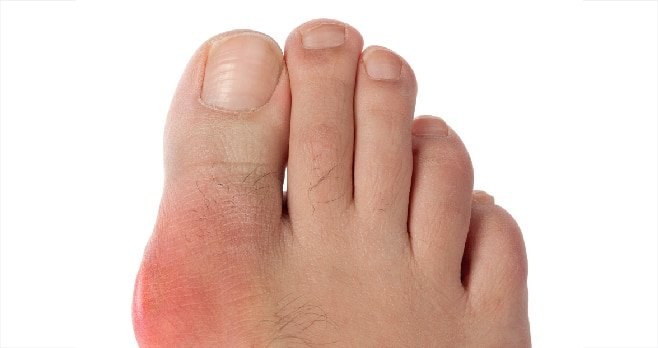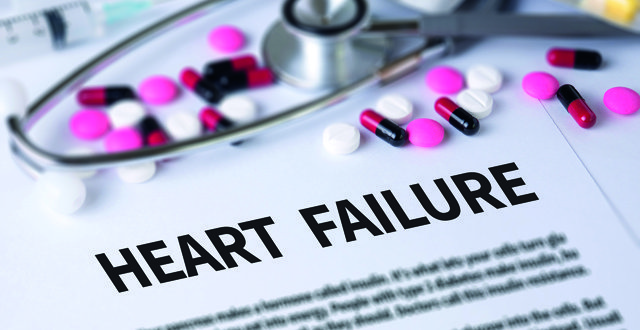Schizophrenia is a common, treatable mental disorder, often seen in general practice.
The condition will affect just under 1 per cent of people at some point in their lives. There are 15-to-20 new cases per 100,000 population per year, an incidence equal to that of type 1 diabetes. Each year, approximately 800 people are admitted to Irish psychiatric hospitals and inpatient units with a new diagnosis of schizophrenia or a related mental disorder.
The first noticeable symptoms of schizophrenia, which is more common in men than women, often emerge in the teen years and include anxiety, low mood, social withdrawal or preoccupation with odd beliefs. This description includes most teenagers at some point or other (and many adults too), so these features do not diagnose schizophrenia, although if they are present to a substantial extent, they might identify a young adult at increased risk of psychological or psychiatric problems.
The classic symptoms of schizophrenia, when they emerge, include delusions (unfounded beliefs that persist despite evidence to the contrary) and hallucinations (perceptions without appropriate external stimuli, such as hearing voices). Other features include difficulties with clear thinking and a range of ‘negative’ symptoms similar to depression: Low mood, loss of interest, depleted energy and persistent social withdrawal.
Treatment of schizophrenia
As with all mental disorders, treatment of schizophrenia is based on a biopsychosocial approach: Biological interventions include administration of medications, treatment of coexisting medical illness or substance misuse problems, and, in a small minority of cases, electroconvulsive therapy (ECT). Psychological and social interventions include specific psychotherapies for patients and families, as well as enhancing personal supports and social participation.
There is now considerable evidence to support the benefits of proactive, early intervention in first-episode psychosis, including schizophrenia. Management involves a multidisciplinary team working together with the patient, family and primary care team to diagnose and treat the first episode of illness, prevent the development of subsequent episodes, and establish an ongoing management plan aimed at optimising social function and minimising the effects of the illness on patient and family.
The fundamental principles of treatment in acute schizophrenia are similar to those in many other areas of medicine. Medication should be used at a dose that combines optimal effectiveness with a minimum of side-effects. The use of multiple medications is to be avoided as much as possible, although it can be necessary in certain circumstances. Medication regimens should be rational and understandable, with an emphasis on once-daily dosing where possible. Measures should be taken to assist with complex treatment regimes, and these may involve pharmacy blister-packing, tablet boxes, tablet counters, or supervision by a family member or therapist. Side-effects should be identified early and openly discussed with patient and family, as appropriate.
The UK-based National Institute for Health and Care Excellence (NICE) provides specific treatment recommendations in its review of Psychosis and Schizophrenia in Adults: Prevention and Management, published in February 2014 and (like all NICE guidelines) is freely available from its website. The NICE advice covers a ranges of areas relating to schizophrenia, but places especially strong emphasis on early intervention for first-episode psychosis, for which NICE recommends medication in conjunction with psychological interventions, such as family interventions and individual cognitive behavioural therapy (CBT). NICE also recommends that the choice of medication is made by the patient and healthcare professional (and, if appropriate, carer) together, taking account of likely benefits and possible side-effects, such as weight-gain, movement problems (ie, restlessness), and potential effects on the heart or hormones (ie, raised prolactin).
The first effective medication for schizophrenia, chlorpromazine, was developed in the 1950s and was followed by a number of related medications (in both tablet and injected forms), which made it possible for some long-term patients to leave large institutions and live with greater independence in the community. These medications included fluphenazine, trifluoperazine, flupentixol, haloperidol, zuclopenthixol, sulpiride and pimozide.
It was soon recognised, however, that these medications could have significant adverse effects, including movement disorders (such as restlessness or Parkinsonism), dry mouth, constipation, sedation, effects on the heart (increasing risk of sudden cardiac death), and various other effects (ie, dizziness, impotence). A range of strategies were introduced to manage adverse effects and research focused on developing newer treatments that would combine good clinical effects with fewer side-effects. A new generation of ‘atypical’ antipsychotics was duly developed and introduced to clinical practice, so there is now a broad range of antipsychotic medications available for schizophrenia, with different combinations of benefits and adverse effects. Atypical antipsychotic medications currently available include risperidone, olanzapine, quetiapine, aripiprazole, amisulpride, ziprasidone and paliperidone.
First-episode schizophrenia
In practice, first-episode schizophrenia is now most often treated with an atypical antipsychotic medication, though conventional antipsychotic agents are still sometimes used. These newer atypical agents appear to be as effective as older agents in the management of delusions and hallucinations, and seem to have fewer adverse effects in the recommended dosage ranges. In particular, they are associated with a reduced incidence of movement disorders and reduced incidence of difficulties with clear thinking.
Side-effects can, however, include weight gain, impaired glucose tolerance, and diabetes mellitus, as well as dry mouth, sedation, possible effects on the heart, dizziness and impotence. And, as with all antipsychotics, ‘neuroleptic malignant syndrome’ can occur; this is a rare adverse effect (very high temperature, confusion) that needs to be managed in hospital and can be fatal if not treated. For all patients, it is recommended that, prior to commencing these medications, the person has an electrocardiogram performed, weight and height checked, and a set of basic blood tests done, including blood glucose. These should be monitored annually.
In first-episode schizophrenia, a six-to-eight week trial of an optimal dosage of an atypical medication should be combined with appropriate social and psychological treatment. This usually involves a community mental health team, as well as the primary care team. If this does not produce satisfactory clinical results, therapeutic options should be reviewed and discussed with patient and family. It is important to establish if the patient is not taking the medication for any reason, and to address whatever concerns might be leading to this. Another antipsychotic medication (tablets or injections) can be tried for a further six-to-eight weeks.
In the unlikely event that these steps do not produce sufficient clinical improvement, clozapine can be considered by the mental health team. Clozapine is an antipsychotic that can greatly help persons with difficult-to-treat schizophrenia, but it is reserved for treatment-resistant situations owing to its possible effects on the person’s white blood cell count (and consequent serious infection risk). Due to this risk, clozapine is highly regulated and requires a careful programme of blood-testing while the person is on it. This blood-testing programme is highly effective in detecting and addressing this problem. Other potential side-effects include weight gain, constipation, seizures, cardiac effects, and problems with saliva secretion. Even so, a great number of people have benefitted hugely from this medication, which has been genuinely transformative in the lives of many people with schizophrenia who had extremely distressing symptoms prior to clozapine.
Useful resources for treating schizophrenia
Individuals with any mental disorder or psychological problem, and their families, will find much that is useful on the Internet. Internet resources need to be evaluated with care and only trusted when the information comes from a reliable source. Doctors may be asked for their recommendations. Reliable information about mental health can be sourced from the websites of the HSE (www.hse.ie/eng/health/az), College of Psychiatrists of Ireland (www.irishpsychiatry.ie), Royal College of Psychiatrists in London (www.rcpsych.ac.uk), National Health Service in the UK (www.nhs.uk) and National Institute of Mental Health in the US (www.nimh.nih.gov).
Evidence-based guidance about specific treatments can be found on the website of the UK’s National Institute for Health and Care Excellence (NICE) (www.nice.org.uk).
In addition to the above, Shine is an organisation that aims to empower people with mental ill health and their families through support, information and education. There is useful information about many conditions, including schizophrenia, on their website (www.shine.ie).
One of the best books for people with schizophrenia and their families is Surviving Schizophrenia: A Family Manual (Sixth Edition) by Dr E Fuller Torrey (Harper Perennial, 2013). Torrey is a world expert on the disorder and he presents the facts in a direct and honest fashion, explaining about symptoms and treatment clearly and pragmatically.
Collaborative care
At all stages of treatment, it is essential to discuss the treatment plan with patient and carers; discuss adverse effects of medication (if any); and provide social and personal support for patient and family. There can, however, be particular challenges if the person presents in a highly agitated psychotic state, in a situation of great distress, and possibly presents a risk to self or others.
In this situation, management centres initially on environmental and psychological measures: talking calmly and clearly to the patient, increasing personal space, and ensuring the availability of a comfortable, non-threatening environment for patient and carers. There are many possible causes of acute agitation so care needs to be taken to ensure that the person is not suffering from something other than schizophrenia or something in addition to schizophrenia (ie, intoxication with drugs, or delirium following an injury or illness).
If the person presents a risk to self or others, or if treatment is urgently needed and cannot be otherwise provided, involuntary procedures can be instigated under the Mental Health Act 2001. In very acute circumstances of risk, the gardaí can be called, but this is rare event. The gardaí then have the option of instigating involuntary admission under the Mental Health Act 2001.
Ongoing treatment
Even if response to treatment is good following a first episode of psychosis, there is a high risk of relapse if medication is stopped within one-to-two years. In addition, ongoing management of schizophrenia involves much more than medication, and requires a multidisciplinary team working together with the patient, family, GP and primary care team to treat the first episode of illness, prevent the development of subsequent episodes, and establish an ongoing collaborative plan aimed at optimising social function and minimising the effects of the illness on the patient and the family.
Continued treatment with antipsychotic medication is part of a package of therapies that can help prevent relapse. It is important to discuss treatment with patient and family, and to seek out evidence of adverse effects of medication or non-concordance with treatment. Treatment for depression may also be needed for some people, and this might involve medication at times, as well as psychological therapy and support.
Long-term use of antipsychotic medication use may be associated with the development of side-effects (as outlined above). Each side-effect is addressed in its own way. In general, if a side-effect develops, it is wise to consider the possibility of other causes also, ie, weight gain may be due to poor dietary habits rather than medication. Appropriate measures should be instigated to address the underlying cause. Some medication can contribute to the development of diabetes, and this requires fundamental reconsideration of the chosen treatment, as well as management of the diabetes.
If the side-effect appears to be due to the medication, it may be a good first step to consider reducing the dose or switching to another medication, if this is clinically appropriate and acceptable. There are also specific strategies for the management of particular unwanted effects, such as movement disorders, and a psychiatrist or GP can advise about these. Additional medication can play a role in managing these problems, although the use of complex combinations of different medications is to be avoided where possible, and social or psychological measures should accompany all interventions. There is particular concern in recent times about the effects of certain antipsychotic medications on the heart, and so some medications require cardiac monitoring under specialist supervision.
Negative symptoms
It is often the negative symptoms of schizophrenia, such as social withdrawal or impaired motivation, that prove most distressing for family and carers in the long-term. Current medications that are effective in the alleviation of symptoms such as hallucinations or delusions tend to have a much weaker effect on negative symptoms. There is a strong need to develop further medications that combine enhanced clinical effectiveness with fewer side-effects, as these are likely to also prove more acceptable to patients, enhance adherence to treatment, and improve overall therapeutic outcomes.
In addition to pharmacological management, there is a series of other interventions that are critical in the management of schizophrenia. Psychoeducation for patient and family helps develop understanding of the illness and its treatment, and enhances the therapeutic alliance between family and healthcare providers. Other psychological approaches of proven benefit include cognitive behavioural therapy (CBT), family therapy, art therapy (especially for negative symptoms) and self-help groups and forums.
Recent years have seen particular interest in CBT for certain patients with schizophrenia, focusing on helping them deal with persistent delusions and hallucinations. NICE now recommends offering structured CBT to assist patients with establishing links between thoughts, feelings, actions, and their symptoms and functioning, and re-evaluating other people’s perceptions, beliefs or reasoning as they relate to target symptoms. Other aspects of CBT in psychosis include monitoring one’s own thoughts, feelings or behaviours with respect to symptoms; promoting alternative coping strategies; diminishing distress; and improving functioning.
Social interventions for schizophrenia include the assessment of social and occupational needs, provision of appropriate information and training, and advice on financial and practical matters relating to housing, occupation, and social function. Many people with schizophrenia, especially if it follows a chronic course, experience difficulties obtaining and sustaining accommodation. It is important to ensure that accommodation is appropriate to the needs of the patient and that there are no preventable psychosocial stressors likely to hinder recovery. It is also important to recognise the role of support and encouragement from family and friends during both the illness and the recovery phase.
In the case of long-term mental illness, there may be a need to seek accommodation outside the family home, for a variety of reasons. Finding accommodation can be particularly challenging for patients who were homeless prior to presentation. Boarding houses, halfway houses, hostels, lodging schemes and many other models of accommodation have been explored, with varying degrees of success. Local authorities bear significant responsibility to work constructively with mental health services, patients and families in fashioning appropriate solutions for individual patients.
Occupational engagement is another key area for many people with schizophrenia, especially those with recurring episodes of psychosis. The development of acceptable and gainful occupation for people with schizophrenia is dependent on the abilities and aptitudes of the individual person, and the availability of appropriate financial and human resources. In the case of acute schizophrenia, there may well be a return to previous employment or education following an episode of illness.
In the case of chronic schizophrenia, there may be a need for further training or a reformulation of employment or training plans. The provision of specific employment programmes can help with rehabilitation and ongoing treatment for people with persistent symptoms or psychosocial disability associated with mental illness. Day centres may form a further focus for daily activity and also provide an opportunity for detailed clinical assessment and liaison with family and carers.
Some people with schizophrenia, particularly with recurrent episodes or ongoing psychosocial disability, may need assistance or guidance with some of the tasks of daily living, such as arranging finances, budgeting and saving. In many cases, this will be carried out independently by the patient, or with supervision from family or friends. In some cases, there may be a need for supervision which cannot be met by family or friends, for a variety of reasons. In these cases, a social worker, occupational therapist, community mental health nurse or other member of the multidisciplinary team may undertake to provide assistance in these often difficult-to-navigate areas.
Outcome
Schizophrenia is a relatively common mental disorder that can be disabling, but is treatable. Seventy per cent of people who experience a psychotic episode will be well within one year, although many will have a second episode. Discontinuing medication within the first 18 months makes the person five times more likely to experience a relapse.
The lifetime risk of suicide in schizophrenia is approximately 10 per cent, which is higher than the general population risk (which is under 1 per cent). Risk is especially high in young males during the first few years of schizophrenia, and if there are persistent delusions or hallucinations, drug misuse, or previous attempts at suicide. In practical terms, these statistics mean that (a) the vast majority of people with schizophrenia will not die by suicide; (b) suicide cannot be predicted in any given individual with schizophrenia (as it is still a rare event); and (c) risk will likely be diminished if the person persists with treatment and does not misuse drugs.
Schizophrenia is associated with reduced rates of social interaction, marriage, reproduction, and workforce participation, with the result that two-thirds of people with chronic schizophrenia are unemployed. Tragically, most of this ‘secondary disability’ is not attributable to the illness itself, but to society’s prejudicial responses to it. This is a key issue for patients, families and society in general: Equal access to the workforce is a fundamental economic and social right. People with schizophrenia commonly experience violations of this right, along with de facto violations of the right to liberty (ie, increased rates of imprisonment, often for minor offences) and various other rights (ie, the right to appropriate housing). Remedying this persistent discrimination, reducing stigma and combatting social exclusion of the mentally ill (including those with schizophrenia), is a task not just for health professionals, but also for patients and their families, service-user groups, and the politicians who shape mental health policy and social services in Ireland.
Finally, one of the other long-term challenges in schizophrenia is the recurring finding that the illness is associated with poor physical health. Life expectancy is considerably reduced in schizophrenia: On average, men with schizophrenia die 15 years earlier, and women 12 years earlier, than the rest of the population. This excess is not accounted for by unnatural deaths; the leading causes are heart disease and cancer. As a result, there is a need for ongoing and enhanced focus on the physical health of persons with schizophrenia, including (but not limited to) support in stopping smoking, promotion of improved diet and lifestyle, and screening for cardiac risk factors (ie, high blood pressure and cholesterol). In addition, treatment with antipsychotic medication reduces the likelihood of premature death in schizophrenia — providing yet another reason to persist with treatment in this complex, misunderstood but eminently treatable disorder.










Leave a Reply
You must be logged in to post a comment.